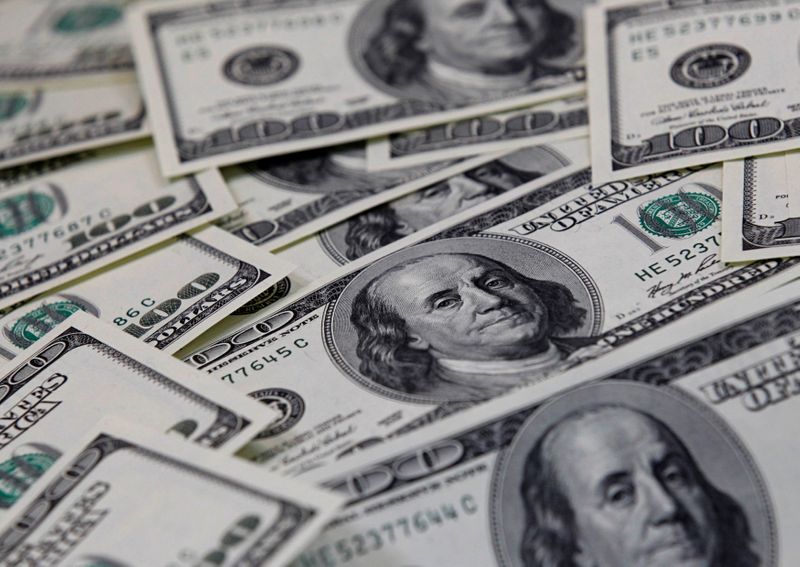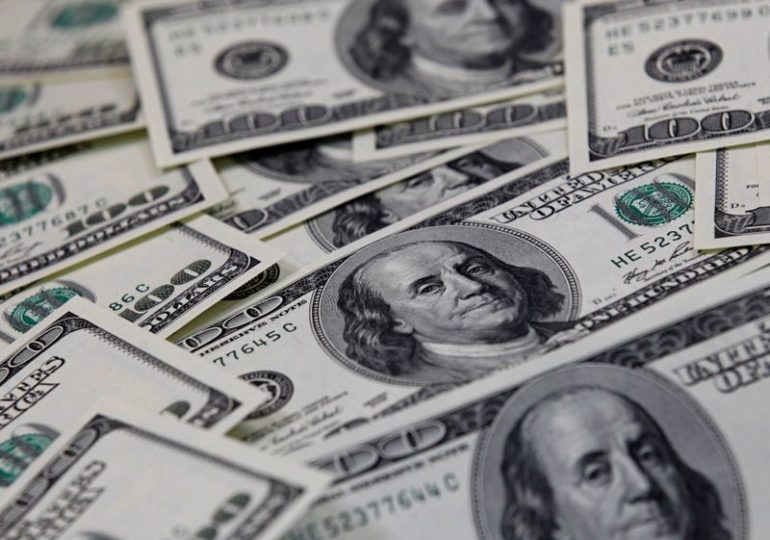 © Reuters. FILE PHOTO: U.S. one hundred dollar notes are seen in this picture illustration
© Reuters. FILE PHOTO: U.S. one hundred dollar notes are seen in this picture illustration
By Kevin Buckland
TOKYO (Reuters) – The safe-haven dollar found support at the start of a new week with traders remaining wary amid the battle on Wall Street between hedge funds and retail investors.
Wrangling over the size of President Joe Biden's fiscal stimulus package and delays to vaccine rollouts also weighed on sentiment, stoking demand for safer assets.
"What happens in the next one day to one week to one month is probably in the hands of risk sentiment," said Ray Attrill, head of forex strategy at National Australia Bank (OTC:NABZY) in Sydney. "If we do see a deeper equity correction, I’ve got no doubt that the U.S. dollar can show a little bit more strength."
The dollar index was little changed at 90.58 early on Monday, holding on to last week's gain of about half a percent, as Asian stocks traded weaker for a fifth session.
The gauge has been largely range-bound in recent weeks, after bouncing from a nearly three-year low of 89.206 at the start of the year.
Investors are trying to evaluate whether an almost 7% selloff in 2020 — driven by expectations of a global pandemic recovery amid massive fiscal spending and continued ultra-easy monetary policy — is likely to continue.
A group of Republican senators are urging Biden, a Democrat, to significantly downsize his proposed $1.9 trillion pandemic relief package, and have floated a $600 billion alternative.
Elsewhere, Wall Street is bracing for more volatility after retail investor groups that organised via social media targeted hedge fund short positions, with some traders worried that the wild swings in GameStop (NYSE:GME) and other stocks could foreshadow a market correction.
The dollar slipped 0.1% to 104.63 yen, further retreating from the 2-1/2-month high of 104.94 touched on Friday.
The euro was little changed at $1.2132, as it continued to dither in a narrow range.
The riskier Aussie dollar dipped following new signs of weakness in the recovery in China, a key customer for Australian commodities.
Australia's currency sank as low as 76.06 U.S. cents early in the session before recovering to be little changed at 76.307 cents.
Data from the weekend showed China's factory recovery slowed in January, hobbled by a wave of coronavirus infections.
Leave a comment
